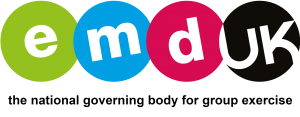Last Updated on August 29, 2025 by Arun
Group Reformer Pilates is growing in popularity. As demand grows, so do class sizes, with some studios now holding sessions for up to 32 participants. But with the use of complicated equipment, can we really keep these classes safe, inclusive, and effective for everyone in the room?
At EMD UK, we champion our members getting more people moving – but never at the cost of safety or quality. So let’s take a look at the unique risks that come with reformer Pilates, what instructors need to be aware of, and how to deliver group classes that meet the needs of all participants.
Why group reformer carries higher risks
In 2019 a violinist who had performed at the Proms successfully sued the studio where she broke her elbow on a Coreformer machine. She was awarded interim damages of £80,000 for what could have been a career-ending injury. You only need to go to the Reddit feeds to see that there are many more reported injuries following incorrect, or under-supervised use of reformers. We’re in the business of making people healthier, not causing them an injury, so it’s essential we pay due care and attention to the risks.
The reformer is a complex piece of moving apparatus designed originally for 1:1 or small group instruction, with repertoire rooted in the principals of the Pilates method including centering, breath, control, concentration, precision and flow. There comes a point when the class numbers increase to too high a number that the Pilates method can’t be taught effectively and the class becomes more of a group fitness class on a reformer than a class taught with Pilates method. This will be dependent on the teacher experience, qualifications and skills.
When delivered safely, reformer Pilates is transformative. But without the right checks, it also carries one of the highest injury risks of any class on the studio schedule. From spring tension to carriage control, there’s a lot going on under the surface – and a lot that can go wrong without trained supervision.
Reformer teachers have a duty to understand the equipment in depth, understand the Pilates method and teach participants how to work with the method and check the equipment too. From manufacturer differences to daily safety routines, here are the key hazards to address:
What could go wrong?
1. Springs and gear bar
Spring tension affects resistance, stability and movement control, and the wrong load can cause injury. Gear bar settings vary between manufacturers, and incorrect setup can damage equipment or misalign the body.
What to do:
- Ensure settings are always correct according to the manufacturer’s guidelines
- Participants need support, learning how to adjust springs confidently and safely.
Participants need to understand the correct spring tension for them in each exercise.
2. Carriage, shoulder rests and head block
Misuse of the carriage or poor alignment can create a catapult effect, especially during tall kneeling or standing exercises.
What to do:
- Ensure correct head block height and shoulder clearance to maintain spinal alignment and control
- Conduct daily carriage checks and weekly cleaning for maintenance.
- Ensure spring tension is tested in low kneeling before high kneeling and the participant kneels safely and correctly on the carriage
- Ensure any standing on the carriage the participant has three points of contact.
3. Ropes, foot bar and fixtures
Loose or mismatched rope lengths can pull clients off-centre or cause dangerous jerks during movement.
What to do:
- Check foot bars for security every time they are moved, particularly before applying pressure
- Pause and cue safety checks before exercises begin
- Teach participants how to check ropes, carabiners or any moving parts themselves between exercises.
4. The repertoire: choose wisely for group settings
Not every Pilates move belongs in a group class. Some classic exercises, especially standing, rollover or high-kneeling moves, carry significantly higher risk when supervision is limited. That doesn’t mean you can’t teach dynamic, powerful sessions. It means being intentional with your programming and sequencing to ensure every participant has a safe, achievable experience.
Notes for a safer repertoire:
- Avoid all standing rope/cable work in group settings
- Use three points of contact for standing exercises – e.g. carriage + footplate + dowel
- Always start high-risk movements (like rollovers) with preparatory drills and checks
- Progress high kneeling work from low kneeling, confirming spring load each time.
A checklist to support safe delivery of Reformer Pilates:
This list is by no means exhaustive. Group reformer can absolutely be part of a thriving studio timetable, but only when taught with care, clarity and confidence. If you’re unsure whether your current setup is safe, take time to review your equipment, class structure, and training. When in doubt, check it out.
EMD UK is the only governing body dedicated solely to the group exercise community. Our members benefit from our guidance, CPD-accredited courses and over 250 resources. Pro membership with insurance starts from just £51 annually.


